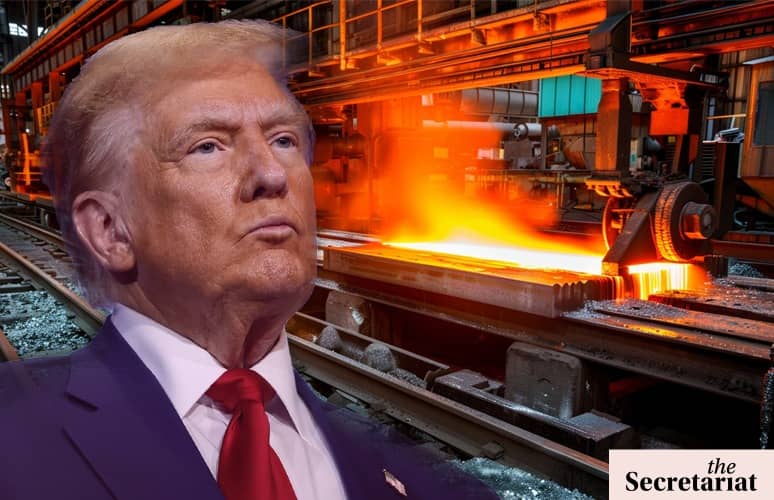Washington, D.C., August 21, 2025 — In a sweeping escalation of protectionist trade policy, President Donald Trump‘s administration has announced a 50% tariff on steel and aluminum content across 407 additional product categories, ranging from wind turbines and railcars to EV parts, appliances, and furniture.
Officials defended the measure as a “necessary intervention” to close circumvention loopholes and protect domestic industries from being undermined by cheaper foreign imports. But behind the scenes, economists and manufacturers warn of cascading disruptions, price surges, and supply‑chain fractures that could reshape U.S. competitiveness.

Manufacturing faces rising costs and deeper divides
Manufacturers now grapple with a double‑edged sword: protection at the top, financial pain at the bottom. According to an analysis by Boston Consulting Group, doubling tariffs could add over $100 billion annually to U.S. import costs, translating into downstream hikes for housing, autos, and renewable energy infrastructure.
The automotive sector is among the hardest hit. U.S. automakers, already squeezed by EV transition costs, now face skyrocketing input prices, while foreign competitors retain advantages in untariffed regions. That tension risks pushing offshore manufacturing, defeating the tariffs’ original intent.
A fragile steel renaissance
The Trump administration’s pitch, led by President Donald J. Trump, frames tariffs as a pathway to “revitalizing domestic capacity.” Yet, as Wall Street Journal reporting shows, announced expansions—totaling 21 million tons of new steel capacity—are already outpacing projected demand, threatening an oversupply crunch in coming years.
For renewable energy projects, dependent on large turbines, heavy-duty cranes, and specialized electrical steel, the 50% levy could cause significant delays, stalling climate goals and infrastructure commitments.
Among industry voices, Alan Bernau Jr., owner and metal expert at Alan’s Factory Outlet, distills the stakes succinctly:
“If you already have thin margins, price increases can only stall projects, create job losses… manufacturers will turn to ‘friends-shoring’… consumers foot the added cost, delays on infrastructure work, and increased costs of everything.”
Bernau’s perspective reflects broader manufacturing concerns: even large-scale players can’t absorb these cost shocks indefinitely.
Global reactions and looming trade friction
The ripple effects stretch beyond U.S. borders. European Union officials are considering export levies on recycled steel and aluminum after surging scrap exports to the U.S. threatened domestic supply chains. Meanwhile, Asian suppliers, including Vietnam and South Korea, are quietly redirecting trade flows toward friendlier jurisdictions to bypass penalties.
Geopolitical analysts, according to what was published in the Associated Press, warn this policy could trigger a new trade confrontation with allies and competitors alike, resembling past disputes during the Trump-era tariff waves.
Short-term protection, long-term gamble
While U.S. policymakers hail the tariffs as a patriotic shield for domestic industries, analysts warn that these protections risk backfiring if not paired with strategic investment in recycling, advanced manufacturing, and automation. Without those measures, according to the Washington Post, the policy risks inflating consumer costs while failing to meaningfully increase domestic resilience.
For now, one thing is certain: the price of American protectionism is already being paid, not by policymakers, but by manufacturers, suppliers, and consumers.


